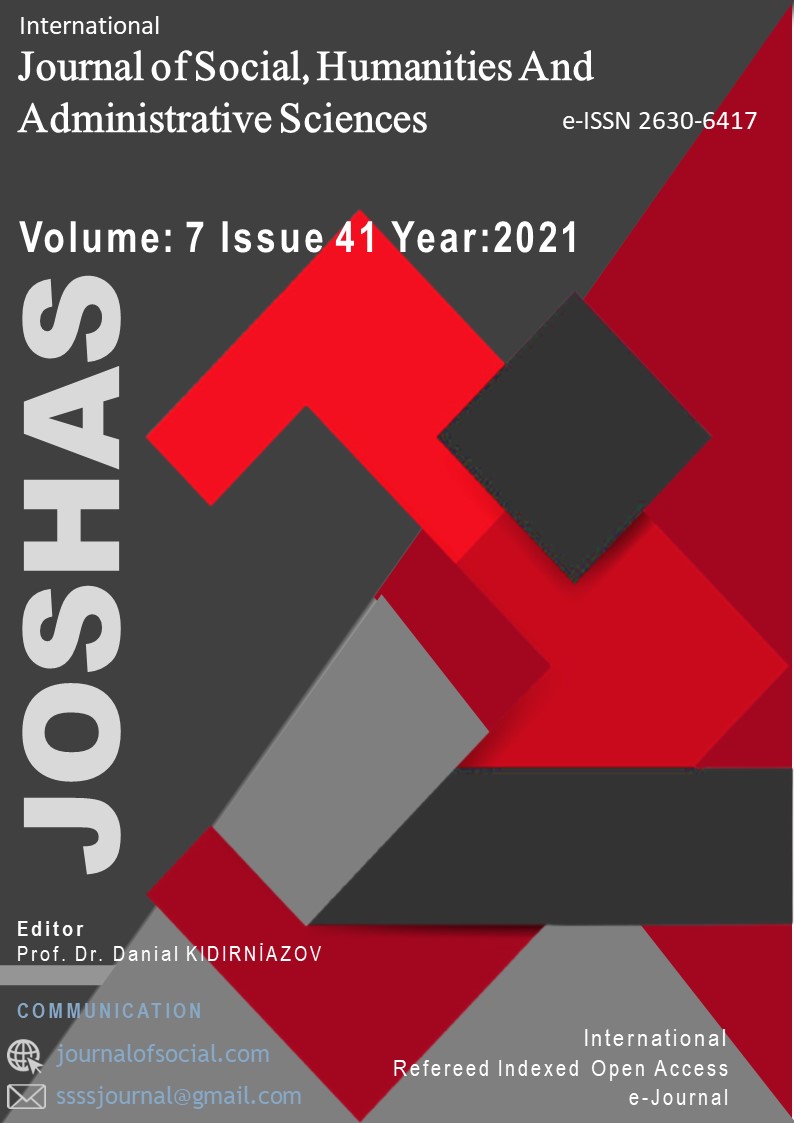Author :
Abstract
Örgütlerin yapısında ve insan kaynağında meydana gelen değişimler örgütler için her zaman olumlu sonuç vermeyebilir. Yönetimsel ve informel iletişimde yaşanan sorunlar örgüt kültüründe değişime ve örgütsel yabancılaşmaya neden olabilir. Çalışanları yabancılaşan örgütler işlevini kaybetmiş ve hedeflerine ulaşmada yara almıştır. Bu çalışmada, uçuş personelinin örgüt kültürü ve yabancılaşma durumları incelenmiştir. Özel şirketlerde çalışmakta olan 323 pilot, kabin amiri, kabin görevlisi ve yer görevlisi çalışmaya dahil edilmiştir. Çalışmanın sonuçlarına göre, yönetimsel sorunlar, çalışma saatleri, işyerinde sahip olunan pozisyon, yasal yetkiler ve güç olarak tanımlanan birincil karar verebilir pozisyonda olma/olmama yabancılaşma düzeyini doğrudan etkilemektedir.
Keywords
Abstract
Changes in the human resources and organizational structures do not provide positive results in every time. Administrative dysfunctions and informal communication problems can bring together the toxic behavior in specific organizations. Organizations whose employees are alienated have lost their function and have been injured in reaching their goals. In this study, the perception of organizational culture and alienation in flight crew was analyzed. 323 flight personnel (pilot, cabin crew and ground personal) were included in the study. According to the results of the study, administrative issues, working hours, positions in the workplace, legal competence and primary decision-making position to be defined as power have directly affected the level of alienation.
Keywords
- Agarwal, S. (1993). Influence of formalization on role stress, organizational commitment, and work alienation
- Agarwal, S. (1993). Influence of formalization on role stress, organizational commitment, and work alienationof salespersons: A cross- national comparative study. Journal of International Business Studies, 24(4), 715-Aranki, D. H., Suifan, T. S., & Sweis, R. J. (2019). The relationship between organizational culture and organizational commitment. Modern Applied Science, 13(4), 137-154.
- Azambuja, R., & Islam, G. (2019). Working at the boundaries: Middle managerial work as a source of emancipation and alienation. Human Relations, 72(3), 534-564.
- Banai, M. & Reisel, W. D. (2007). The influence of supportive leadership and job characteristics on work alienation: A six-country investigation. Journal of World Business, 42 (4), 463–476.
- Berson, Y., Oreg, S., & Dvir, T. (2008). CEO values, organizational culture and firm outcomes. Journal of Organizational Behavior, 29(5), 615-633
- Bolin, A. ve Heatherly, L. (2001). Predictors of employee deviance: the relationship between bad attitudes and bad behavior, Journal of Business and Psychology, 15(3), 405-418.
- Aryani, R., & Widodo, W. (2020). The Determinant of Organizational Culture and Its Impact on Organization: A Conceptual Framework. International Journal of Higher Education, 9(3), 64-70.
- Ceylan, A. &Sulu, S. (2011). Organizational injustice and work alienation. Ekonomika a Management, 14(2), 65-78.
- Gürcü, Ö.D. ve Yozgat, U. (2012). Algılanan Örgütsel Adaletin Örgütsel Yabancılaşmaya Etkisi: Yalova İliKamu ve Özel Kuruluşlarında Karşılaştırmalı Bir Araştırma, 20. Ulusal Yönetim ve Organizasyon Kongresi Bildiriler Kitabı, 24-26 Mayıs İzmir, 1. Baskı, 597-603.
- Ireland, R. D., Hitt, M. A., & Sirmon, D. G. (2003). A model of strategic entrepreneurship: The construct and its dimensions. Journal of management, 29(6), 963-989.
- İçli, T. (2013). Kriminoloji. Ankara: Seçkin Yayınları.
- Kıyan, Ş. (2011). Ekolojik Feminizm Bağlamında Kadınların Tüketici Olarak Pazarda Yabancılaşması, Çankırı Karatekin Üniversitesi İktisadi ve İdari Bilimler Fakültesi Dergisi, 1(1), 85-104.
- Meng, J., & Berger, B. K. (2019). The impact of organizational culture and leadership performance on PRprofessionals’ job satisfaction: Testing the joint mediating effects of engagement and trust. Public Relations Review, 45(1), 64-75.
- Meyerson, G., & Dewettinck, B. (2012). Effect of empowerment on employees performance. Advanced Research in Economic and Management Sciences, 2(1), 40-46.
- Muizu, W. O. Z., & Sari, D. (2019). Improving Employee Performance Through Organizational Culture,Leadership, and Work Motivation: Survey on Banking Organizations in Southeast Sulawesi. Jurnal Bisnis dan Manajemen, 20(1), 71-88.
- Nair, N. & Vohra, N. (2010). An exploration of factors predicting work alienation of knowledge workers. Management Decision, 48 (4).600-615.
- Nikpour, A. (2017). The impact of organizational culture on organizational performance: The mediating roleof employee’s organizational commitment. International Journal of Organizational Leadership, 6, 65-72.
- Paais, M., & Pattiruhu, J. R. (2020). Effect of motivation, leadership, and organizational culture on satisfaction and employee performance. The Journal of Asian Finance, Economics, and Business, 7(8), 577-588.
- Raselekoane, N.R. (2008). Social theory of alienation and psychoanalysis: Towards an understanding ofhuman alienation and insanity in E.S. Madima's A siene. South African Journal of African Languages, 28(1), 59-68.
- Sarhan, N., Harb, A., Shrafat, F., & Alhusban, M. (2020). The effect of organizational culture on theorganizational commitment: Evidence from hotel industry. Management Science Letters, 10(1), 183-196. Schein, E. H. (1992). Organizational culture and leadership. San Francisco: Jossey-Bass.
- Seeger, M. W., Ulmer, R.R., Novak, J. M., ve Sellnow, T. (2005). Post-crisis discourse and organizational change, failure and renewal. Journal of Organizational Change Management, 18(1), 78-95.
- Shahzad, F., Xiu, G., & Shahbaz, M. (2017). Organizational culture and innovation performance in Pakistan's software industry. Technology in Society, 51, 66-73.
- Terzi, A.R. (2005). İlköğretim Okullarında Örgüt Kültürü, Kurum ve Uygulamada Eğitim Yönetimi Dergisi, 11(43), 432-442.
- Wallach, E. J. (1983). Individuals and organizations: The cultural match. Training & Development Journal, 37(2), 29-36.
- Warrick, D. D. (2015). Understanding, building, and changing organization cultures. In D. D. Warrick & J.Mueller (Eds.), Lessons in changing cultures: Learning from real world cases (ss. 1—16). Oxford, UK: RossiSmith Academic Publishing.
- Warrick, D. D., Milliman, J. F., & Ferguson, J. M. (2016). Building high performance cultures. Organizational Dynamics, 45(1), 64-70.
- Yadav, G. K. & Nagle, Y.K. (2012). Work alienation and occupational stress. Social Science International, 28





